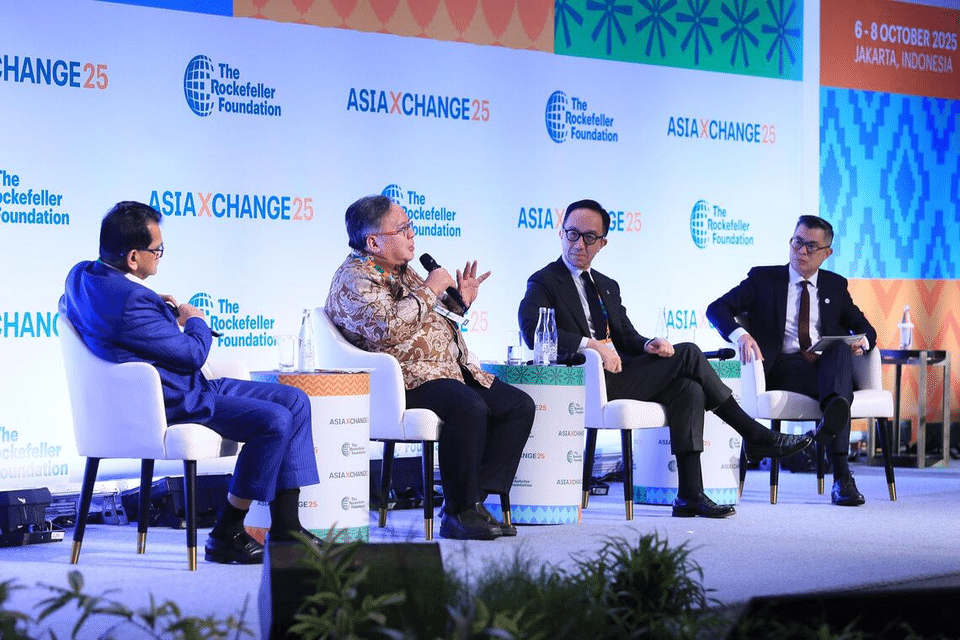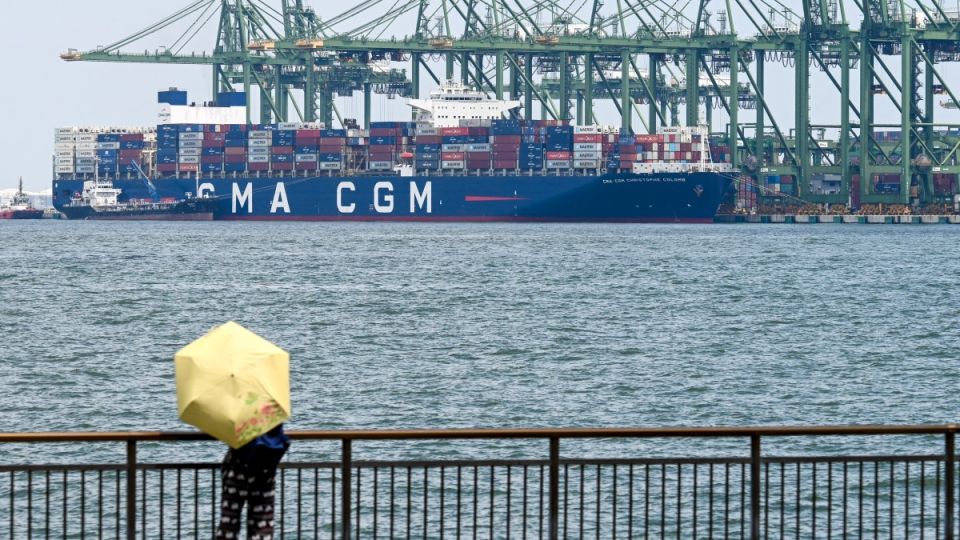October 7, 2025
JAKARTA – In a rapidly shifting geopolitical landscape, Asia’s rise as the world’s economic powerhouse could stall unless countries in the region deepen regional cooperation, invest in sustainable cities and leverage philanthropy to bridge financing gaps, experts have warned.
Individual Asian nations cannot compete head-to-head with the United States or other global powers, said speakers at a forum held in Jakarta on Oct 6. Instead, the countries must act collectively through intra-regional trade, supply chains and technology sharing, said speakers at a panel discussion titled “Shaping the Future: Asia’s Evolving Role”, moderated by The Straits Times editor Jaime Ho.
The US tariff policy is “a wake-up call” for Asia, said former Indonesian finance minister Bambang Brodjonegoro, one of the panellists.
“In the past, we might not have thought about Asia trade, financial or economic integration because relationships between each Asian country and counterparts in Europe, North America, or elsewhere might have no issue. But now the US, the biggest market, is protecting itself. We must find solutions by looking back at what we have,” he said.
US President Donald Trump has imposed tariffs on countries worldwide ,with Asian nations hit unevenly – ranging from a 10 per cent baseline tariff on goods from Singapore to up to 50 per cent on certain imports from India.

(From left) Mr Amitabh Kant, Prof Bambang Brodjonegoro, Prof Gabriel Leung, and Mr Jaime Ho at a panel discussion titled “Shaping the Future: Asia’s Evolving Role” in Jakarta on Oct 6. PHOTO: ROCKEFELLER FOUNDATION/THE STRAITS TIMES
The panel discussion was part of AsiaXchange 2025, a three-day conference from Oct 6 to 8 organised by The Rockefeller Foundation to bring together policymakers, business executives, philanthropists, multilateral institutions and community leaders to discuss ways to help underserved communities in Asia.
Mr Amitabh Kant, former G-20 Sherpa of India, put things in perspective by noting that the US accounts for only 14 per cent of global trade. “Therefore, it is essential for large Asian economies – China, India, Korea, Japan, Indonesia – to work together to drive trade,” he said.
China “has driven manufacturing in a very big way”, particularly in green growth, he said, and has become the centre of solar manufacturing, battery manufacturing and critical minerals. India has in turn been a driver of services, he added.
Mr Kant, who retired from an illustrious career in the Indian administrative service and has a long track record in policy reform, economic development and innovation initiatives, urged Asian countries to drive investments in each other and “learn from each other in technology to leapfrog”.
He noted that for the seventh consecutive year, Singapore is the biggest driver of foreign direct investment in India, surpassing Europe and the US.
“Fifty per cent of Asia is still to be built. That is the opportunity. We need sustainable urbanisation. Urbanisation drives growth, innovation, development, and new science and technology,” he said.
Despite Asia’s size and diversity, trade within Asean has declined in recent years, Professor Bambang observed, highlighting the need for stronger regional integration.
“One motivation should be building supply chains or value chains within Asia, starting with Asean, connecting with South Asia, East Asia, and other parts of Asia. Some advanced Asian economies like Japan and Korea are trying to build supply chains with middle-income parts of Asia, but it is not enough,” he said.
Structural reforms and cooperation will also be vital to help countries avoid the middle-income trap, he said, adding: “We are in danger of facing the middle-income trap, especially for Indonesia, Malaysia and Thailand.”
Prof Bambang, dean and chief executive of the Asian Development Bank Institute, pointed to Europe’s experience as a model for deeper integration. Citing the World Development Report 2024: The Middle-Income Trap, he noted that most new entrants to high-income status hail from Eastern Europe, not Asia.
“Eastern European countries learnt about market economies in the 1990s, and 20 to 30 years later, they are high-income. Asia adopted market economies earlier, but we have not achieved similar integration,” he said.
Warning that Asia’s demographic dividend is declining, he said: “We must act, or we cannot see another Asian miracle like in the 1990s. This is important for Asean’s internal development and global competitiveness.”
Another panellist, Professor Gabriel Leung, said that beyond trade and policy, philanthropy could unlock new pathways for growth.
Prof Leung, who is director of the Hong Kong-based Institute of Philanthropy, described philanthropy as a bridge between state and market, providing flexible capital for innovation and social change.
“Philanthropy has the freedom to experiment and innovate… Asean is heterogeneous but harmonious in moving forward with philanthropic capital,” he said, emphasising the sector’s unique role in catalysing impact.
He stressed that collaboration with financial institutions is necessary to channel philanthropic resources effectively.
Building on this perspective, he added: “If you read Bill Gates’ first book, he said people overestimate what they can do in three years but severely underestimate achievements possible within 10 years. I am always a huge cheerleader and optimist for Asia and Asian philanthropy.”


